
How to Use opamp: Examples, Pinouts, and Specs
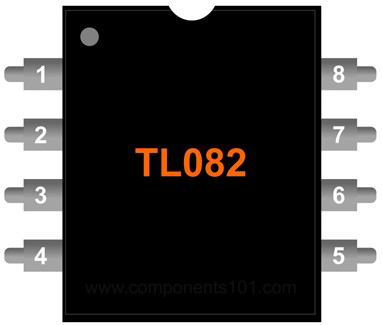
 Design with opamp in Cirkit Designer
Design with opamp in Cirkit DesignerIntroduction
The TL082 is a high-speed, low-power operational amplifier (op-amp) manufactured by Texas Instruments. It features a high slew rate, low input bias current, and low noise, making it ideal for a wide range of analog signal processing applications. The TL082 is a dual op-amp, meaning it contains two independent op-amps in a single package.
Explore Projects Built with opamp
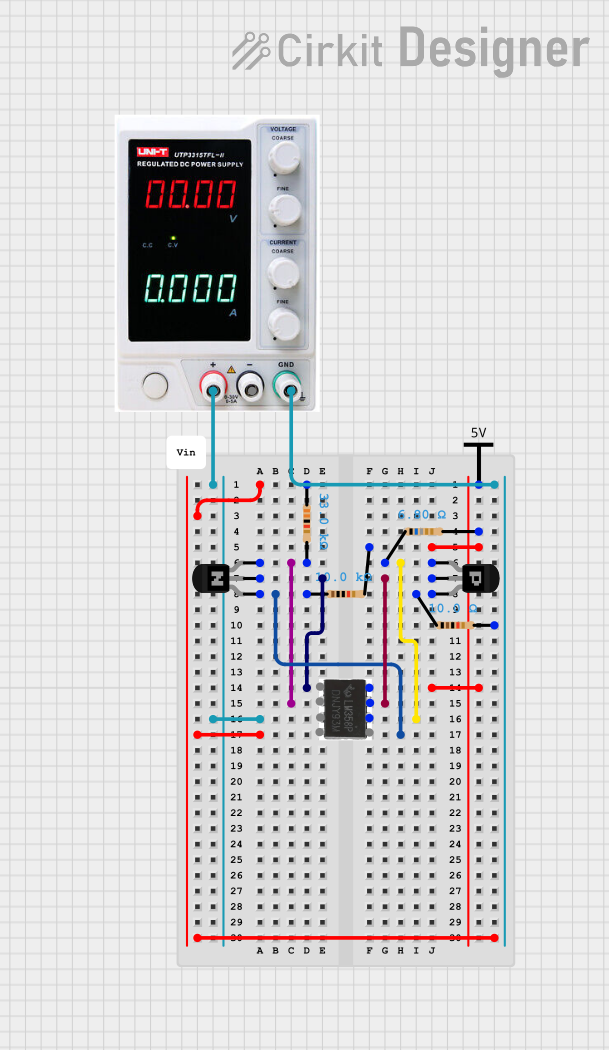
 Open Project in Cirkit Designer
Open Project in Cirkit Designer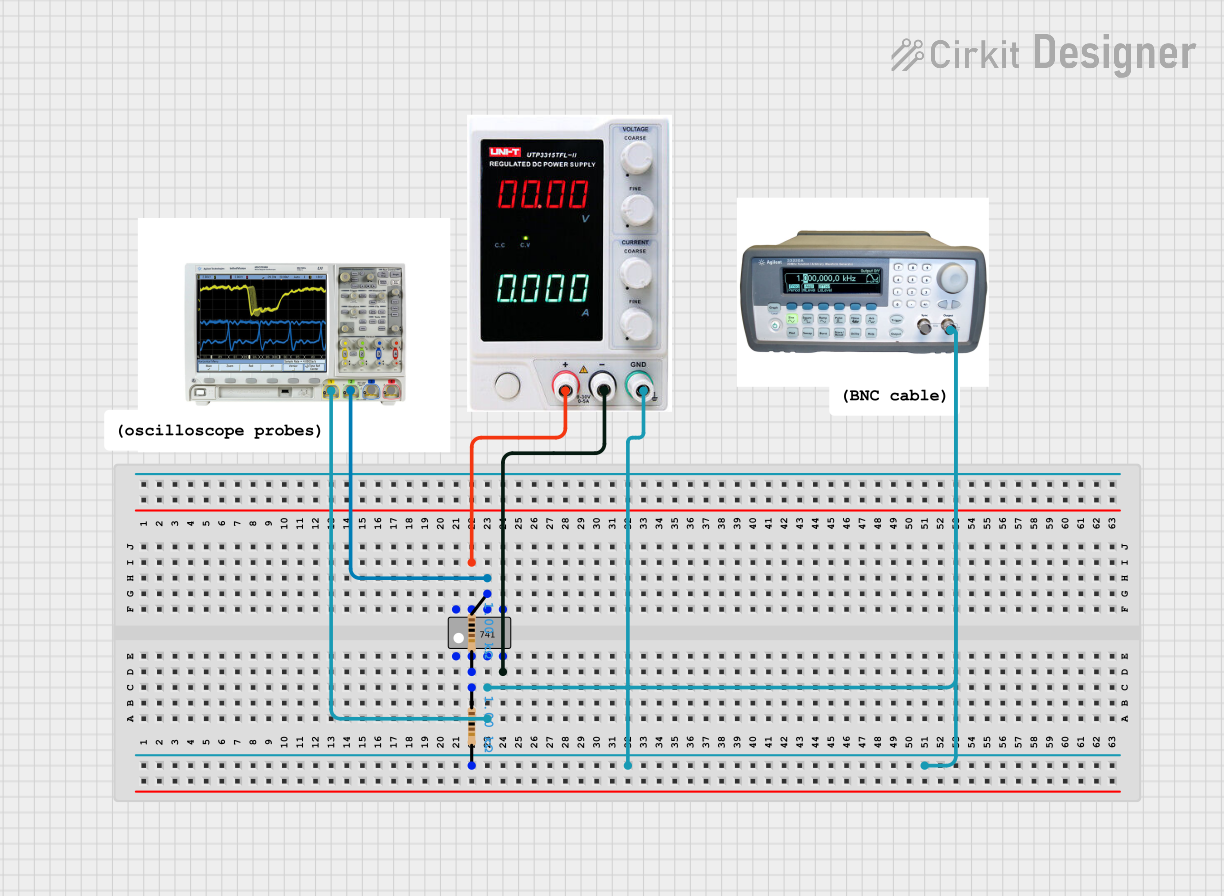
 Open Project in Cirkit Designer
Open Project in Cirkit Designer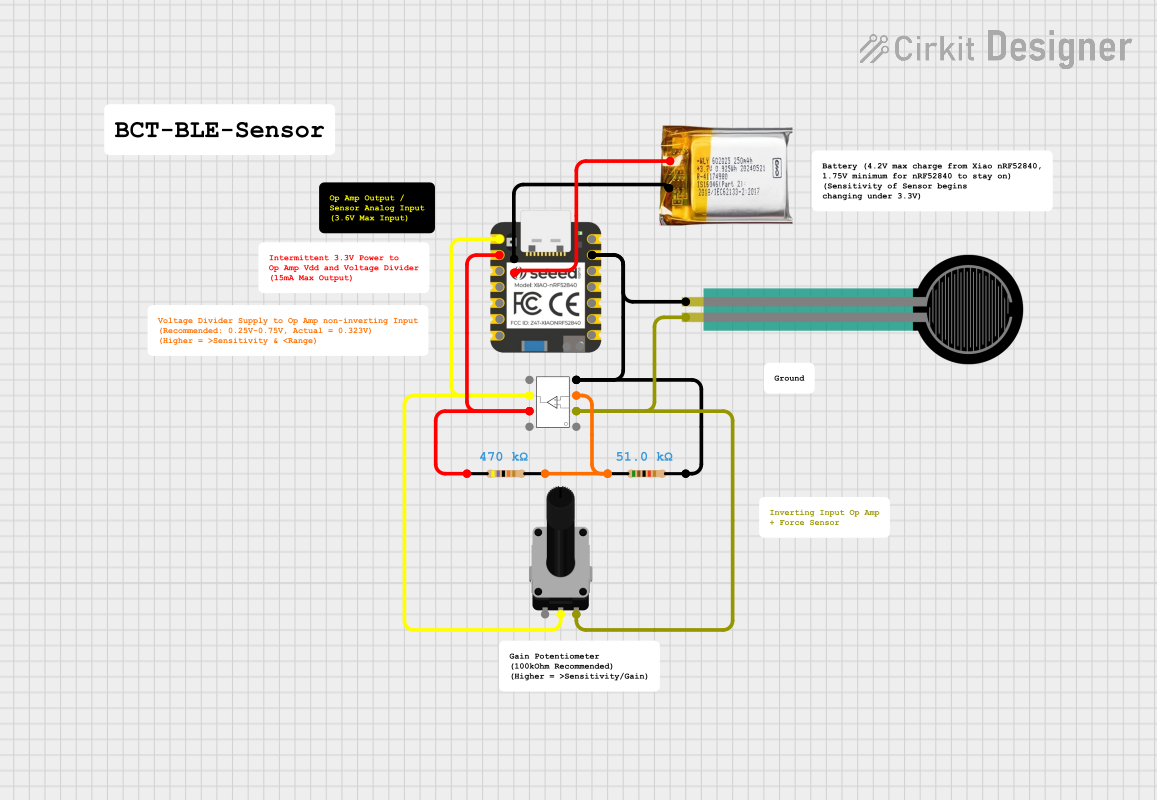
 Open Project in Cirkit Designer
Open Project in Cirkit Designer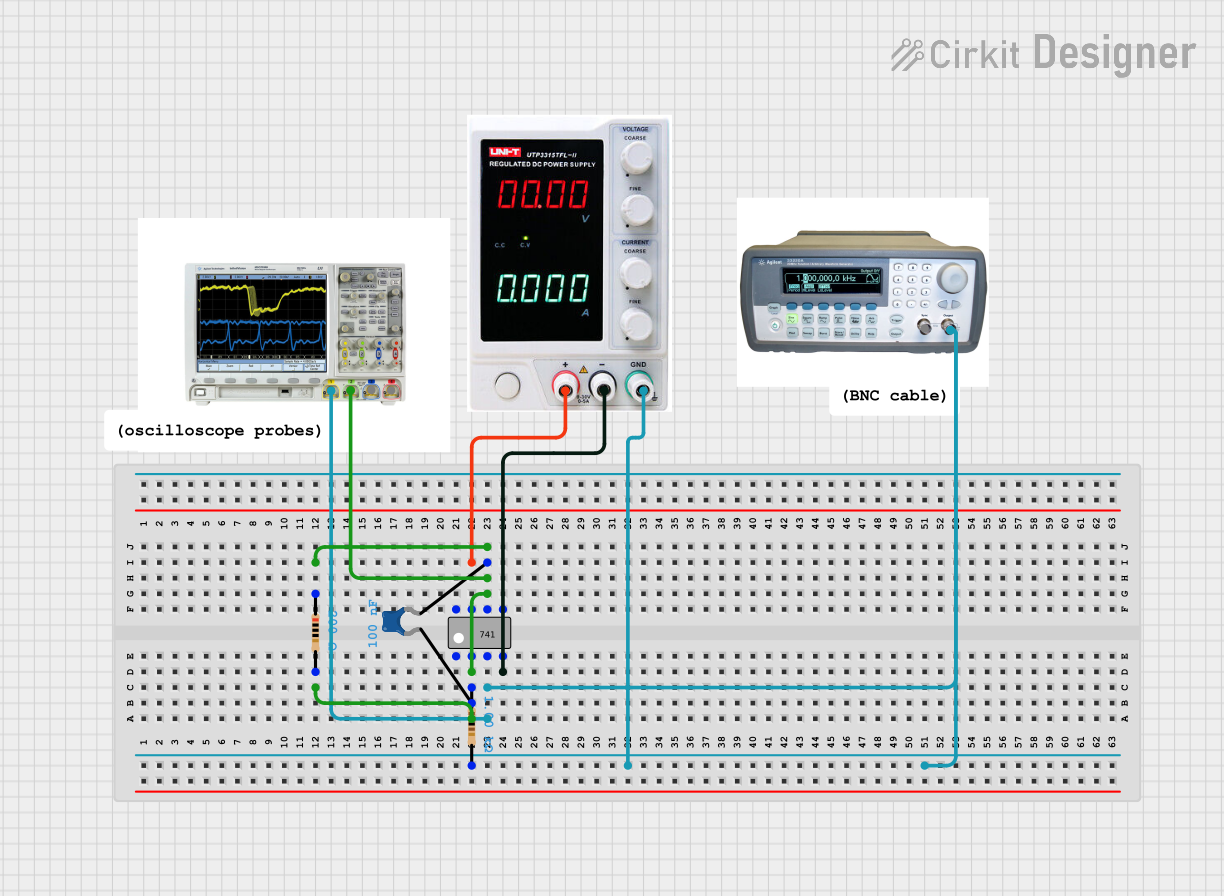
 Open Project in Cirkit Designer
Open Project in Cirkit DesignerExplore Projects Built with opamp

 Open Project in Cirkit Designer
Open Project in Cirkit Designer
 Open Project in Cirkit Designer
Open Project in Cirkit Designer
 Open Project in Cirkit Designer
Open Project in Cirkit Designer
 Open Project in Cirkit Designer
Open Project in Cirkit DesignerCommon Applications
- Signal amplification
- Active filters
- Oscillators
- Analog computation (e.g., addition, subtraction, integration, differentiation)
- Audio preamplifiers
- Voltage followers (buffer circuits)
Technical Specifications
The TL082 is designed for precision and versatility. Below are its key technical specifications:
| Parameter | Value |
|---|---|
| Supply Voltage (Vcc) | ±3V to ±18V or 6V to 36V |
| Input Offset Voltage | 3mV (typical) |
| Input Bias Current | 30pA (typical) |
| Slew Rate | 13V/µs (typical) |
| Gain Bandwidth Product | 3MHz |
| Output Voltage Swing | ±12V (with ±15V supply) |
| Operating Temperature Range | 0°C to 70°C |
| Package Types | PDIP, SOIC, TSSOP |
Pin Configuration and Descriptions
The TL082 is available in an 8-pin Dual In-line Package (DIP). Below is the pinout and description:
| Pin Number | Pin Name | Description |
|---|---|---|
| 1 | Output A | Output of the first op-amp |
| 2 | Inverting Input A | Inverting input of the first op-amp |
| 3 | Non-Inverting Input A | Non-inverting input of the first op-amp |
| 4 | V- (GND) | Negative power supply or ground |
| 5 | Non-Inverting Input B | Non-inverting input of the second op-amp |
| 6 | Inverting Input B | Inverting input of the second op-amp |
| 7 | Output B | Output of the second op-amp |
| 8 | V+ | Positive power supply |
Usage Instructions
The TL082 can be used in a variety of circuit configurations. Below are general guidelines and an example of how to use it in a basic non-inverting amplifier circuit.
Basic Non-Inverting Amplifier Circuit
In this configuration, the TL082 amplifies the input signal without inverting its phase. The gain is determined by the ratio of two resistors.
Circuit Diagram
V+ (Pin 8) --------------------+
|
|
.-.
| |
| | R2
'-'
|
+----> Output (Pin 1)
|
.-.
| |
| | R1
'-'
|
Input (Pin 3) ------------------+
|
---
-
V- (Pin 4) --------------------+
Gain Formula
The voltage gain of the circuit is given by: [ \text{Gain} = 1 + \frac{R2}{R1} ]
Arduino Example Code
The TL082 can be used with an Arduino UNO to amplify an analog signal. Below is an example code to read the amplified signal:
// Arduino code to read an amplified signal from the TL082
const int analogPin = A0; // Pin A0 is connected to the output of the TL082
int sensorValue = 0; // Variable to store the analog reading
void setup() {
Serial.begin(9600); // Initialize serial communication at 9600 baud
}
void loop() {
sensorValue = analogRead(analogPin); // Read the analog value
float voltage = sensorValue * (5.0 / 1023.0); // Convert to voltage
Serial.print("Amplified Voltage: ");
Serial.println(voltage); // Print the voltage to the Serial Monitor
delay(500); // Wait for 500ms before the next reading
}
Important Considerations
- Power Supply: Ensure the supply voltage does not exceed the maximum rating of ±18V.
- Bypass Capacitors: Use decoupling capacitors (e.g., 0.1µF) near the power supply pins to reduce noise.
- Input Impedance: The TL082 has a high input impedance, making it suitable for interfacing with high-impedance sources.
- Thermal Considerations: Operate the TL082 within its specified temperature range to avoid performance degradation.
Troubleshooting and FAQs
Common Issues
No Output Signal
- Cause: Incorrect power supply connections.
- Solution: Verify that V+ and V- are connected to the correct voltage levels.
Distorted Output
- Cause: Exceeding the input voltage range or insufficient power supply voltage.
- Solution: Ensure the input signal is within the common-mode voltage range and the supply voltage is adequate.
High Noise in Output
- Cause: Lack of proper decoupling capacitors.
- Solution: Add 0.1µF capacitors close to the power supply pins.
Overheating
- Cause: Excessive current draw or operation outside the temperature range.
- Solution: Check the circuit design and ensure proper heat dissipation.
FAQs
Can the TL082 be used for audio applications?
- Yes, the TL082's low noise and high slew rate make it suitable for audio preamplifiers and filters.
What is the maximum gain I can achieve with the TL082?
- Theoretically, the gain is limited by the open-loop gain of the op-amp, but in practical circuits, it depends on the resistor values and stability considerations.
Can I use the TL082 with a single power supply?
- Yes, the TL082 can operate with a single supply, but the input signal must be biased within the op-amp's input voltage range.
What is the difference between the TL082 and TL081?
- The TL082 is a dual op-amp, while the TL081 is a single op-amp. Both share similar electrical characteristics.
By following this documentation, you can effectively integrate the TL082 into your electronic designs for a wide range of applications.